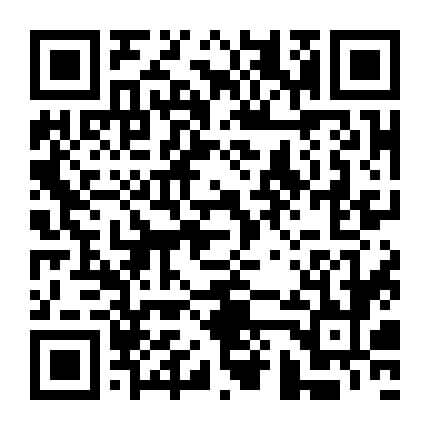2014年全国统考医学考博英语真题
- 1
- 6
- 8
摘要:考博英语真题是每位考生必背的复习资料,希赛网考博英语频道为大家整理2014年全国医学博士英语统一考试真题,详情如下:
希赛网英语频道为大家整理2014年全国医学博士英语统一考试真题。
Part D Vocabulary (10%)
Section A
Directions: In this section, all the sentences are incomplete. Four words or phrases marked A, B, C and D are given beneath each of them. You are to choose the word or phrase that best completes the sentence ,then mark your answer on the ANSWER SHEET.
31. A good night’s sleep is believed to help slow the stomachJ s emptying, produce a smoother, less abrupt absorption of sugar, and will better brain metabolism.
A. regulate B. activate C. retain D. consolidate
32. The explosion and the oil spill below the surface of the Gulf of Mexico left my mind in such a that I couldn’t get to sleep.
A. catastrophe B. boycott C. turmoil D. mentality
33. Coronary heart attacks occur more commonly in those with high blood pressure, in the obese, in the cigarette smokers, and in those to prolonged emotional and mental strain.
A. sympathetic B.ascribed C. preferable D. subjected
34. Most colds are acquired by children in school and then to adults.
A. conveyed B. transmitted C. attributed D. relayed
35. Several of the most populous nations in the world at the lower end of the table of real GDP per capita last year.
A. fluctuated B. languished C. retarded D. vibrated
36. Presently this kind of antidepressant is still in clinical , even though the concept has been around since 1900s.
A. trials B. applications C. implications D. endeavors
37. Studies reveal that exposure to low-level radiation for a long time may weaken the immune system, aging, and cause cancer.
A. halt B. postpone C. retard D. accelerate
38. The mayor candidateJ s personality traits, being modest and generous, people in his favor before the election.
A. predisposed B. presumed C. presided D. pressured
39. With its graceful movements and salubrious effects on health, Tai Chi has a strong to a vast multitude of people.
A. flavor B. thrill C. appeal D. implication
40. If you are catching a train, it is always better to be early even a fraction of a minute than too late.
A. far more B.even more C. enough more D. more far
Part D Vocabulary (10%)
Section B
Directions: Each of the following sentences has a word or phrase underlined. There are four words or phrases beneath each sentence. Choose the word or phrase which can best keep the meaning of the original sentence if it is substituted for the underlined part. Mark your answer on the ANSWER SHEET.
41. All Nobel Prize winners5 success is a process of long-term accumulation, in which lasting efforts are indispensable.
A. irresistible B.cherished C. inseparable D. requisite
42. The Queen5 s presence imparted an air of elegance to the drinks reception at Buckingham Palace in London.
A. bestowed B. exhibited C. imposed D. emitted
43. Physicians are clear that thyroid dysfunction is manifest in growing children in the form of mental and physical retardation.
A. intensified B.apparent C. representative D. insidious
44. The mechanism that the eye can accommodate itself to different distances has been applied to automatic camera, which marks a revolutionary technique advance.
A. yield B.amplify C. adapt D. cast
45. Differences among believers are common; however, it was the pressure of religious persecution that exacerbated their conflicts and created the split of the union.
A. eradicated B.deteriorated C. vanquished D. averted
46. When Picasso was particularly poor, he might have tried to obliterated the original composition by painting over it on canvases.
A. duplicated B.eliminate C. substitute D. compile
47. For the sake of animal protection, environmentalists deplored the construction program of a nuclear power station.
A. disapproved B. despised C. demolished D. decomposed
48. Political figures in particular are held to very strict standards of moral fidelity.
A. loyalty B. morality C. quality D. stability
49. The patient complained that his doctor had been negligent in not giving him a full examination.
A. fury B.ardent C. careless D. brutal
50. She has been handling all the complaints without wrath for a whole morning.
A. fury B.chaos C. despair D. agony
Part DI Cloze (10%)
Directions: In this section there is a passage with ten numbered blanks. For each blank, there are four choices marked A,B,C and D on the right side. Choose the best answer and mark the letter of your choice on the ANSWER SHEET.
For years, scientists have been warming us that the radiation from mobile phones is detrimental to our health, without actually having any evidence to back these 51 up. However research now suggests that mobile phone radiation has at least one positive side effect: it can help prevent Alzheimer’s,52 in the mice that acted as test subjects. If s been suspected, though never proven, that heavy use of mobile phone is bad for your health. If s thought that walking around with a cellphone permanently attached to the side of your head is almost sure to be 53 your brain. And that may well be true, but 15 d rather wait until it5 s proven before giving up that part of my daily life. But what has now been proven, in a very perfunctory manner, is that mobile phone radiation can have an effect on your brain. 54 in this case it was a positive rather than negative effect.
According to BBC News, the Florida Alzheimer Disease Research Center conducted a study on 96 mice to see if the radiation given off by mobile phone could affect the onset of Alzheimer5 s. Some of the mice were “genetically altered to develop beta-amyloid plagues in their brains” 55 they aged. These are a marker of Alzheimer’s. All 96 mice were then “exposed to the lector-magnetic 56 generated by a standard phone for two one-hour periods each day for seven to nine months. ” The lucky things. 57 , the experiment showed that the mice altered to be predisposed to dementia were protected from the disease if exposed before the onset of the illness. Their cognitive abilities were so unimpaired as to be virtually 58 to the mice not genetically altered in any way.
Unfortunately, although the results are positive, the scientists don’t actually know why exposed to mobile phone radiation has this effect. But it’s hoped that further study and testing could result in a non-invasive 59 for preventing and treating Alzheimer’s disease. Autopsies carried out on the mice also concluded no ill-effects of their exposure to the radiation. However the fact that the radiation prevented Alzheimer’s means mobile phones 60 out brains and bodies
in ways not yet explored. And if s sure there are negatives as well as this one positive.
51. A. devices B. risks C. phenomena D. claims
52. A. at least B. at most C. as if D. as well
53. A. blocking B. cooking C. exhausting D. cooling
54. A. Except B. Even C. Despite D. Besides
55. A. until B. when C. as D. unless
56. A. range B. continue C. spectrum D. field
57. A. Reasonably B. Consequently C. Amazingly D. Undoubtedly
58. A. identical B.beneficial C. preferable D. susceptible
59. A. effort B. method C. hunt D. account
60. A. do affect B. did affect C. is affecting D. could have affected
Part IV Reading Comprehension (30%)
Directions: In this part there are six passages, each of which is followed by five questions. For each question there are four possible answers marked A, B, C and D. Choose the best answer and mark the letter of your choice on the ANSWER SHEET.
Passage One
I have just returned from Mexico, where I visited a factory making medical masks. Faced with fierce competition, the owner has cut his costs by outsourcing some of his production. Scores of people work for him in their homes, threading elastic into masks by hand. They are paid below the minimum wage, with no
job security and no health care provision.
Users of medical masks and other laboratory gear probably give little thought to where their equipment comes from. That needs to change. A significant proportion of these products are made in the developing world by low-paid people with inadequate labor rights. This leads to human misery on a tremendous scale. Take lab coats. Many are made in India, where most cotton farmers are paid an unfair price for their crops and factory employees work illegal hours for poor pay. One-fifth of the world5 s surgical instruments are made in northern Pakistan. When I visited a couple of years ago I found most worker toiling 12 hours a day, seven days a week, for less than a dollar a day, exposed to noise, metal dust and toxic chemicals. Thousands of children, some as young as 7, work in the
industry. To win international contracts, factory owners must offer rock-bottom prices, and consequently drive down wages and labor conditions as far as they can. We laboratory scientists in the developed world may unwittingly be encouraging this: we ask how much our equipment will cost, but which of us asks who made it and how much they were paid? This is no small matter. Science is supposed to benefit humanity, but because of the conditions under which their tools are made, many scientists may actually be causing harm. What can be done? A knee-jerk boycott of unethical goods is not the answer; it would just make things
worse for workers in those manufacturing zones. What we need is to start asking suppliers to be transparent about where and how their products are manufactured and urge them to improve their manufacturing practices.
It can be done. Many universities are committed to fair trade in the form of ethically sourced tea, coffee or bananas. That model should be extended to laboratory goods.There are signs that things are moving. Over the past few years I have worked with health services in the IK and in Sweden. Both have recently instituted ethical procurement practices. If science is truly going to help humanity, it needs to follow suit.
61. From the medical masks to the lab coats, the author is trying to tell us .
A. the practice of occupational protection in the developing world
B. the developing countries plagued by poverty and disease
C. the cheapest labor in the developing countries
D. the human misery behind them
62. The concerning phenomenon the author had observed, according to the passage .
A. is nothing but the repetition of the miserable history
B.could have been even exaggerated
C. is unfamiliar to the wealthy west
D. is prevailing across the world
63. The author argues that when researchers in the wealthy west buy tools, they should .
A. have the same concern with the developing countries
B. be blind to their sources for the sake of humanity
C. pursue good bargains in the international market
D. spare a thought for how they were made
64. A proper course of action suggested by the author is .
A. to refuse to import the unethical goods from the developing world
B. to ask scientists to tell the truth as the prime value of their work
C. to urge the manufacturers to address the immoral issues
D. to improve the transparency of international contracts
65. By saying at the end of the passage that if science is truly going to help humanity, it needs to follow suit, the author means that .
A. the scientific community should stand up for all humanity
B.the prime value of scientists5 work is to tell the truth
C. laboratory goods also need to be ethically sourced
D. because of science, there is hope for humanity
Part IV Reading Comprehension (30%)
Passage Two
A little information is a dangerous thing. A lot of information, if it5 s inaccurate or confusing even more so. This is a problem for anyone trying to spend or invest in an environmentally sustainable way. Investors are barraged with indexes purporting to describe companies eco-credentials, some of dubious quality. Green labels on consumer products are ubiquitous, but their claims are hard to verify. The confusion is evident from the New Scientists' analysis of whether public perception of companies’ green credentials reflect reality. It shows that many companies considered “green” have done little to earn that reputation, while others do not get sufficient credit for their efforts to reduce their environmental impact. Obtaining better information is crucial, because decisions by consumers and big investors will help propel us towards a green economy. At present, it is too easy to make unverified claims. Take disclosure of greenhouse gas emission, for example. There are voluntary schemes such as a Carbon Disclosure Project, but little scrutiny of the figures companies submit, which means investors may be misled.
Measurements can be difficult to interpret, too, like those for water use. In this case, context is crucial: a little from rain-soaked Ireland is not the same as a little drawn from the Arizona desert. Similar problems bedevil “green” labels attached to individual products. Here, the computer equipment rating system developed by the Green Electronics Council show the way forward. Its criteria come from the IEEE, the world5 s leading, professional association for technology.
Other schemes, such as the “sustainability index" planned by US retail giant Walmart, are broader. Devising rigorous standard for a large number of different types of product will be tough, placing a huge burden on the academic-led consortium that is doing the underlying scientific work. Our investigation also reveals that many companies choose not to disclose data. Some will want to keep it that way. This is why we need legal requirements for full disclosure of environmental information, with the clear message that the polluter will eventually be required to pay. They market forces will drive companies to lean up their acts.
Lef s hope we can rise to this challenge. Before we can have a green economy we need a green information economy—and itJ s the quality of information, as well as its quantity, that will count.
66. "The confusion” in the first paragraph refers to .
A. where to spend or invest in a sustainable way
B. an array of consumer products to choose
C. a fog of unreliable green information
D. little information on eco-credibility
67. From the New Scientists analysis it can be inferred that in many cases .
A. eco-credibility is abused B. a green economy is crucial
C. an environment impact is lessened D. green credentials promote green economy
68. From unverified claims to difficult measurements and then to individual products, the author suggests that .
A. eco-credibility is a game between scientists and manufactures
B. neither scientists nor manufactures are honest
C. it is vital to build a green economy
D. better information is critical
69. To address the issue, the author is crying for .
A. transparent corporate management B. establishing sustainability indexes
C. tough academic-led management D. strict legal weapon
70. Which of the following can be the best inference from the last paragraph?
A. The toughest challenge is the best opportunity.
B. It is time for another green revolution.
C. Information should be free at all.
D. No quantity, no quality.
Part IV Reading Comprehension (30%)
Passage Three
People are extraordinarily skilled at spotting cheats—much better than they are at detecting rule-breaking that does not involve cheating. A study showing that just how good we are at this adds weight to the theory that our exceptional brainpower arose through evolutionary pressures to acquire specific cognitive skills.
The still-controversial idea that humans have specialized decision systems in addition to generalized reasoning ability has been around for decades. Its advocates point out that the ability to identify untrustworthy people should be favored evolutionally since cheats risk undermining the social interactions in which
people trade goods or services for mutual benefit.To test whether we have a special ability to reason about cheating, Leda Cosmides, an evolutionary psychological test called the Wason selection test, which tests volunteers’ ability to reason about “if/then" statements.
The researchers set up scenarios in which they asked undergraduate volunteers to imagine they were supervising workers sorting applications for admission to two schools: a good one in a district where school taxes are high, and a poor one on an equally wealthy, but lightly taxed district. The hypothetical workers
were supposed to follow a rule that specified “ if a student is admitted to the good school, they must live in the highly taxed district”. Half the time, the test subjects are told that the workers had children of their own applying to the schools, thus having a motive to cheat ; the rest of the time they were told the workers were merely absent-minded and sometimes made innocent errors. Then the test subjects were asked how they would verify that the workers were not breaking the rule.Cosmides found that when the “supervisors” thought they were checking for innocent errors, just 9 of 33, or 27 percent, got the right answer—looking for a student admitted to the good school who did not live in the highly-taxed district. In contrast, when the supervisors thought they were watching for cheats, they did much better with 23 of 34, or 68 percent getting the right answer.
This suggests that people are, indeed more adept at spotting cheat than at detecting mere rule-breaking. Cosmides says, “any cues that it5 s just an innocent mistake actually inactivate the detection mechanism. The result is what you would expect if natural selection had favored this specific ability in early, pro-social humans—and is not at all what would happen under selection for generalized intelligence, Cosmidessays. “ My claim is that there is nothing domain-general in the mind, just that that can51 be the only thing going on in the mind."
Other psychologists remain skeptical of this conclusion. “If you want to conclude that therefore there5s a module in the mind for detecting cheater, I see zero evidence for that," says Steven Sloman, a cognitive scientist at Brown University in Providence, Rhode Island. '* It5 s certainly possible that it5 s something we
learned through experience. There is no evidence that it’s anything innate. ”
71. The findings of the study were in favor of .
A. the highly-advocated skills of cheating at school
B.the relation between intelligence and evolution
C. the phenomenon of cheating at school
D. the human innate ability to cheat
72. The test “supervisors” appeared to be more adept at .
A. spotting cheats than what appeared to be mere rule-breaking
B.detecting mere rule-breaking than spotting cheats
C. spotting their own children cheating than others doing it
D. detecting cheats in the highly taxed district than in the lightly taxed one
73. When she says " ...that can51 be the only thing going on in the mind”,Cosmides most probably implies
that .
A. cheating is highly motivated in the social interactions
B.our specific cognitive skills can serve an evolutionary purpose
C. there is no such a mental thing as a specialized decision-making system
D. the ability to identify untrustworthy people should be favored evolutionarily
74. In response to Cosmides’ claim, Sloman would say that .
A. it was great possibility B.it would be misleading
C. it was unbelievable D. it’s acquired
75. Which of the following can be the best title for the passage?
A. Cheating at School B. Cheating as the Human Nature
C. Imaginary Intelligence and Cheating D. Intelligence Evolved to Root Out Cheats
Part IV Reading Comprehension (30%)
Passage Four
For many environmentalists, all human influence on the planet is bad. Many natural scientists implicitly share this outlook. This is not unscientific, but it can create the impression that greens and environmental scientists are authoritarian tree-huggers who value nature above people. That doesn’t play well with mainstream society, as the apparent backlash against climate scientist revels.
Environmentalists need to find a new story to tell. Like it or not, we now live in the anthropogene (人类纪)一an age in which humans are perturbing many of the planet’s natural systems, from the water to the acidity of the oceans. We cannot wish that away we must recognize it and manage our impacts.
Johan Rockstrom, head of the Stockholm Environment Institute in Sweden, and colleagues have distilled recent research on how Earth system work into a list of nine “ planetary boundaries” that we must stay within to live sustainably. It is preliminary work, and many will disagree with where the boundaries are set. But the point is to offer a new way of thinking about our relationship with the environment—a science-based picture that accepts a certain level of human impact and even allow us some room to expand. The result is a breath of fresh air: though we are already well past three of the boundaries, we haven’t trashed the
place yet.
It is in the same spirit that we also probe the basis for key claims in the Intergovernmental Panel on Climate Change5 s 2007 report on climate impacts. This report has been much discussed since our revelations about its unsubstantiated statement on melting Himalayan glaciers. Why return to the topic? Because there is a sense that the IPCC shares the same anti-human agenda and, as a result, is too dangerous of unverified numbers. While the majority of the report is assuredly rigorous, there is no escaping the fact that parts of it make claims that go beyond the science.
Above all, we need a dispassionate view of the state of the planet and our likely future impact on it. There is no room for complacency: Rockstrom5 s analysis shows us that we face real dangers, but exaggerating our problems is not the way to solve them.
76. As the 1st paragraph implies, there is between environmentalists and mainstream society .
A. a misunderstanding B. a confrontation C. a collaboration D. a consensus
77. Within the planetary boundaries, as Rockstrom implies, .
A. we humans have gone far beyond the limitations
B.our human activities are actually moderate in degree
C. a certain level of human impact is naturally acceptable
D. it is urgent to modify our relationship with the environment
78. The point, based on Rochstrom5 s investigation, is simply that .
A. they made the first classification of Earth systems
B.it is not to deny but to manage impacts on the planet
C. we are approaching the anthropogene faster than expected
D. human being s are rational and responsible creatures on earth
79. Critical of the IPCC5 s 2007 report, the author argues that they .
A. missed the most serious problem there B.were poorly assembled for the mission
C. cannot be called scientists at all D. value nature above people
80. It can be concluded from the passage that if we are to manage the anthropogene successfully, we .
A. must redefine our relationship with the environment
B.should not take it seriously but to take it easy
C. need a new way of thinking about nature
D. need cooler heads and clearer statistics
Part IV Reading Comprehension (30%)
Passage Five
Humanity has passed a milestone: more people live in cities than in rural areas. The current rate of urbanization is unprecedented in our history. In 1950, only 29% of people lived in cities, by 2050, 70% are projected to do so—most of them in poorer countries. Among many other issues, this rapid concentration makes cities a front line in the battles against climate change and pollution. Confronting the challenges of rampant urbanization demands integration multidisciplinary approaches, and new thinking. Take the building boom associated with the increased wealth of urban areas, and its impact on greenhouse-gas emissions as an example. In China alone, the United Nations Environmental Program estimates the energy demand for heating homes build over the next decade could increase by some 430 terawatthours, or 4% of China5 s total energy use in 2003. Worldwide, the energy consumed by buildings already accounts for around 45% of greenhouse-gas emissions.
Fortunately, researchers in Germany and elsewhere have already shown that they can reduce that energy consumption by 80% -90% , just by overhauling obsolete building designs and using existing technologies. These ultra-efficient buildings demand that planners, architects, engineers and building scientists work together from the outset, and require higher levels of expertise the conventional buildings. But such buildings are often cheaper than those built using conventions methods. Research is also needed to develop technologies, materials and energy concepts; the green building research today is fragmented and
poorly funded.Expanding cities must embrace such technologies and strategies—and not just in the developed nations. Many poorer countries have a rich tradition of adapting buildings to look at practices, environments and climates—a home-grown approach to integrated design that has been all but been lost in the West.They now have an opportunity to combine these traditional approaches with modern technologies. Integrated thinking is also needed to mitigate urban air pollution, which is becoming serious health and environmental risk in many regions一as shown by China’s struggle to clean up Beijing ’ s air for the Olympics. Understanding air pollution will require researchers from multiple disciplines, from atmospheric chemistry to meteorology, working over scales from street level to global. And reducing it will require integrated policies for urban planning, transport and housing—not least to reduce the use of cars.
81. The passage begins with .
A. the globalization of poverty B. a new challenge to mankind
C. a new disease of civilization D. the global phenomenon of weather change
82. From the illustration of China, the author is trying to tell us that .
A. Chinese citizens neglect their impact on greenhouse-gas emission
B.the pace of urbanization is being accelerated at an alarming rate
C. rapid urbanization will increase greenhouse-gas emissions
D. the building boom is running faster there than elsewhere
83. Which of the following can meet the demand by the rampant urbanization?
A. Shrinking cities by 80% -90%. B.Building ultra-efficient buildings.
C. Restoring the conventional buildings. D. Abandoning existing building technologies.
84. The author thinks highly of those poorer countries .
A. introducing the developed countries ’ green technologies
B. building megacities while promoting energy efficiency
C. staying away from modern building technologies
D. integrating their buildings with nature
85. China’s struggle to clean up Beijing ’ s air for the Olympics, according to the passage, is a convincing example of .
A. the inevitability of our clean and sustainable metropolitan future
B.the necessity of encouraging citizens to use public transportation
C. the urgency of addressing climate change in the developing countries
D. the importance of integrated thinking to meeting the challenges of urbanization
Part IV Reading Comprehension (30%)
Passage Six
On June 26, 2000, two scientific teams announce at the White House that they had deciphered virtually the entire human genome, a prodigious feat that involved determining the exact sequence of chemical units in human genetic material. An enthusiastic President Clinton predicted a revolution in “the diagnosis, pre-
vention and treatment of most, if not all, human diseases”.
Now, 10 years later, a sobering realization has set in. Decoding the genome has led to stunning advances in scientific knowledge and DNA-processing technologies but it has done relatively little to improve medical treatments or human health. To be fair, many scientists at the time were warning that it would be a long, slow slog to reap clinical benefits. And there have been some important advances, such as powerful new drugs for a few cancers and genetic tests that can predict whether people with breast cancer need chemotherapy. But the original hope that close study of the genome would identify mutations or variants that cause diseases like cancer, Alzheimer’ s and heart ailments—and generate treatments for them—has given way to realization that the causes of most diseases are enormously complex and not easily traced to a simple mutation or two. In the long run, it seems likely that the genomic revolution will pay off. But no one can be sure. Even if the genetic roots of some major diseases are identified, there is no guarantee that treatments can be found. The task facing science and industry in the conning decades is at least as challenging as the original deciphering of the human genome.
86. Back in the year 2000, what was exciting about the deciphered genome?
A. Its claim at the turn of the new millennium.
B. Its great potential of producing medical value.
C. President Clinton’s predicting of a moral controversy.
D. Its announcement for the first time at the White House.
87. Clinically, according to the passage, the prophecy ten years later .
A. is provided to be fair enough B. is realized in clinical trails
C. turns out to be a reality D. is far from realization
88. From our disappointment we have to realize that •
A. most human diseases cannot be conquered
B. the deciphering of the human genome was fruitless
C. the cause of disease cannot be simply explained by a mutation or two
D. many clinical harvests have nothing to do with the deciphered genome
89. It can be concluded from the passage that .
A. difficulties are hard to predict in doing science
B. sometimes it is no use finding the genetic roots of diseases
C. scientists are not supposed to make any predictions
D. the clinical benefits of the genomic revolution will take time
90. The writer5 s tone in the passage is .
A. rational B.cynical C. doubtful D. skeptical
延伸阅读
- 国防科技大学2026年博士研究生招生目录
- 国防科技大学2026年博士研究生招生简章
- 三个月逆袭76分!大龄在职理工男零基础拿下北建大博士
- 中国艺术研究院2025年考博英语考情分析
- 中国社会科学院大学2025年考博英语考情分析
- 上海交通大学医学2025年考博英语考情分析

考博英语微信公众号

了解更多考试动态
考博英语备考资料免费领取
去领取

根据120+院校真题,整理出考博英语历年真题和模拟试题训练,助力快速备考。
- 1
- 6
- 8
 专注在线职业教育24年
专注在线职业教育24年






 扫描二维码
扫描二维码
 扫描二维码
扫描二维码








